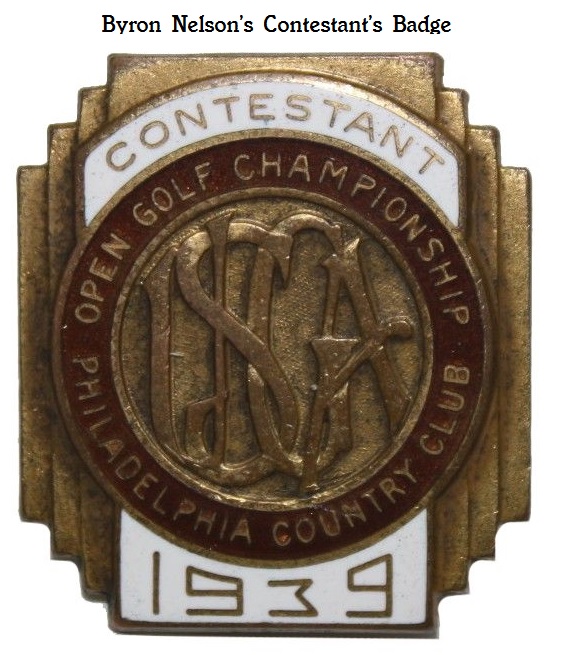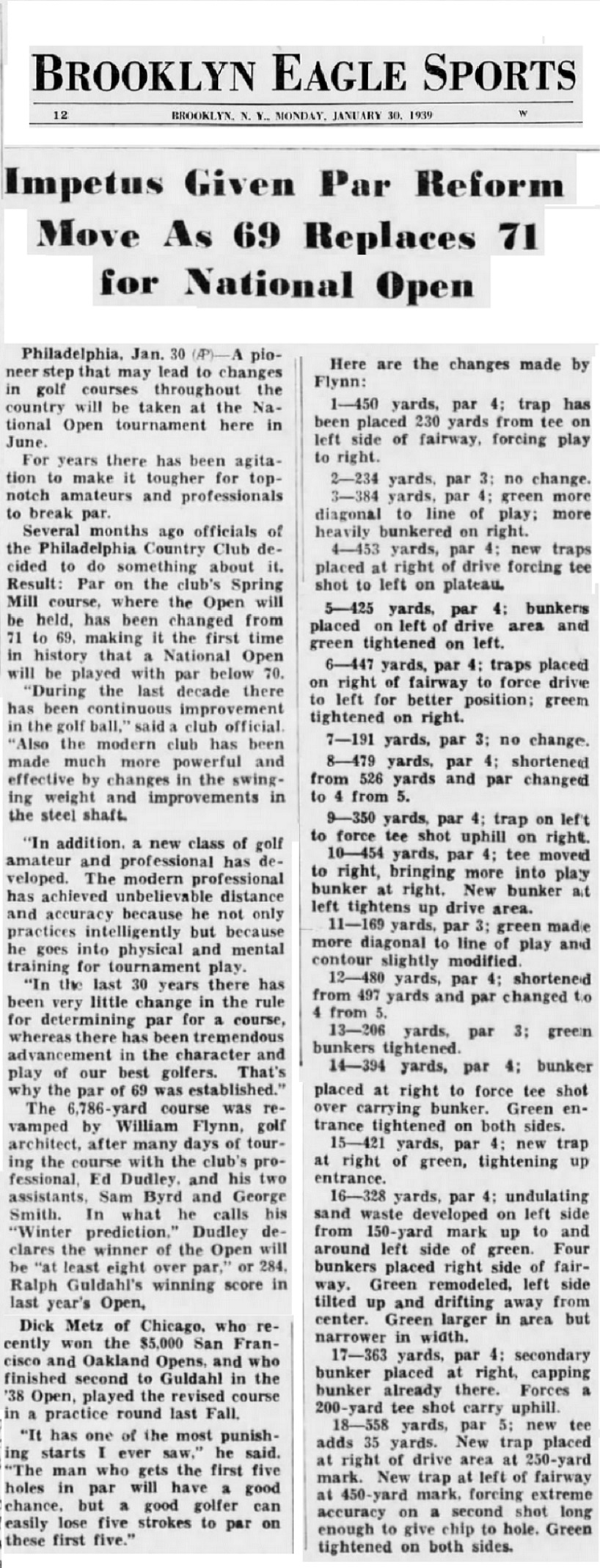The 1939 US Open on the Spring Mill course of the PCC was quite an affair. Byron Nelson, the eventual winner, was in an 18-hole three way playoff with Denny Schute and Craig Wood after 72 holes. Shute fell back, Nelson and Wood remained tied after the 18-hole playoff, and it took another 18 holes between the two of them before Nelson came out on top. It was Byron's second of his five major championships. Sadly, as the story goes, Sam Snead was told he needed a birdie to win on the last hole of regulation play when all he really needed was a par, which caused him to be more aggressive than prudent. His triple bogey 8 on the hole knocked him out of the tournament. No swag for Sam.


Over the course of the event Nelson hit six flagsticks with six different clubs - driver, the 1, 4, 6 and 9 irons, plus his wedge. He must have kissed the 1 iron as he holed out with it for an eagle on the 4th hole during the second 18 hole playoff against Wood.

There's a 23 minute video of the tournament here. It comes from the Trenham (Pete) Golf History site.
https://www.youtube.com/watch?v=ojLSy8UCXow&feature=youtu.beBut now, onto the topic. PCC wasn't going to let the Pros tear up their course, so they decided to change par from 71 to 69 (supposedly the first time the Open was played on a course with a par under 70), and bring William Flynn in to strengthen the layout. As the article below shows, the club felt that they needed to make the changes due to advances in the ball, the equipment, and the improved physicality of the players themselves.

So I guess it could be said that William Flynn, courtesy of PCC, was the first Open Doctor, at least until we hear something to the contrary.

...and a first for the course and tournament with 69 as par.